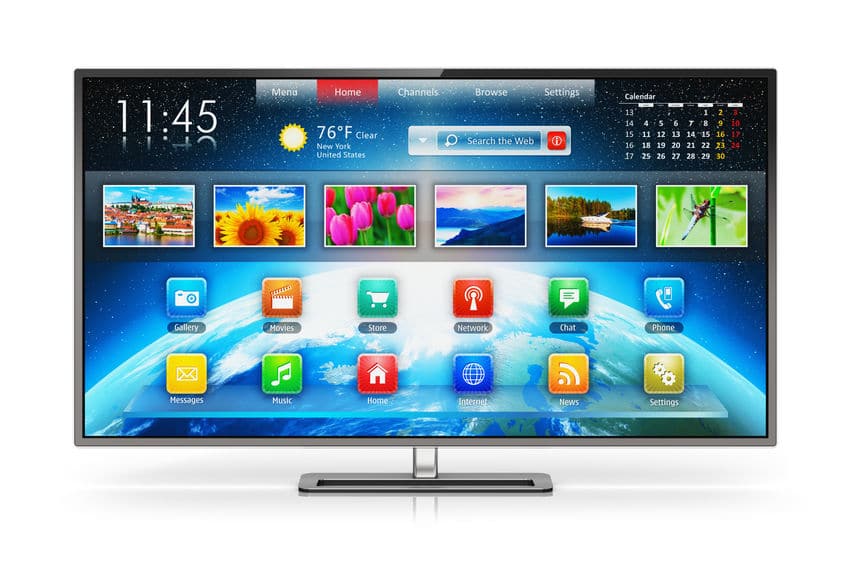With the rapid changes in digital video it’s hard to keep up with all the new terms for how video content and ads are delivered to consumers. As you are probably aware video ads are considered to be one of the premiere ways to reach consumers. Videos will represent 82% of the web traffic by 2021, and 64% of users are more likely to buy a product online after watching a video.
Watching video (and seeing video ads) is a staple of browsing on our phones, tablets and computers, but now there is a whole new world of video advertising including ads embedded in shows, being streamed (viewed) through an internet connected T.V.

“Advanced TV” is the general label being used for these new technologies but there are a lot of different products that fall under that term. Here is a glossary of the most common terms and most commonly accepted explanations of them!
OTT: “Over The Top” This is an umbrella term for video programming transmitted via the Internet that bypasses traditional cable or broadcast (linear) distribution. It can be consumed on any device including computers, mobile devices, TVs, and gaming systems. Click here to read the IAB’s take on OTT.
CTV: “Connected TV” This is a type of OTT and refers to consuming video programing through TV sets that are connected to the Internet through built in technology (Smart TVs) or through devices connected to the TV such as Apple TV, Chromecast, Amazon Fire, and gaming consoles.
OTA: “Over The Air” This is broadcast TV also called “linear TV” or “traditional TV”. It’s content that is delivered without using satellite transmission or cable.
AVOD: “Ad-Supported Video-On-Demand” Ad-supported video-on-demand platforms like YouTube make their money off ads in between their content. As a result, the platforms are free for viewers. Are you paying for the service? No? Do ads run between the content? Yes? Then it’s an AVOD service.
SVOD: “Subscription Video on Demand” Video content that requires access to a subscription video on demand service. Examples include Netflix, Hulu, and Amazon Prime. Are you paying for the service? Yes? Then it’s an SVOD service.
vMVPD: “Virtual Multichannel Video Programming Distributor” These are distributors that aggregate live and on-demand television but deliver the content over the internet. Examples include Sling, DIRECTV NOW, PlayStation™ Vue, YouTube Live, Hulu Live, fuboTV, Roku, Apple TV, and Amazon Fire TV. Does the digital service offer content similar to how cable and broadcast do? Yes? Then its a vMVPD.
Hybrid Models: Several streaming services fall into more than one category. For example, Pluto TV and Xumo both offer 100-plus linear channels for livestreaming, they also offer a growing collection of video-on-demand programming. The Roku Channel, while its primary offering is ad-supported video-on-demand, also includes a small collection of linear channels.
Skinny Bundles: A skinny bundle is what is offered by a Virtual Provider (vMVPDs) and is a small selected amount of channels (usually well under 100 channels) available to consumers to purchase at a reduced price vs. what they pay for traditional cable TV. These bundles are aimed at being cheaper than a cable package and also an alternative to purchasing individual over-the-top (OTT) apps directly from each video content provider. Examples of companies offering Skinny Bundles are Sling TV, PlayStation Vue, and DIRECTV NOW.
ATV: “Addressable TV” The ability to serve different ad content to different audience segments watching the same TV program on IP connected TVs and set top boxes of cable companies or satellite providers, by dynamically inserting an ad based on specific audience targeting in either live, playback, or Video On Demand mode. Examples would include offerings by Comcast, DIRECTV, and Dish. (Addressable TV got the go-ahead from the FCC for local TV stations. See “Next Gen TV” and “ATSC 3.0” below.
Smart TV: A television set that is capable and enabled to access the internet.
Internet Connected Device: Devices connected to the TV that are used to stream content such as Apple TV, Roku, Google Chromecast, Amazon Fire TV, gaming systems, smartphone, computer, laptops, etc.
Linear Platforms: Refers to video content that is real-time television service that broadcasts scheduled programs, over the air or through satellite or cable, not streamed to a specific user.
Next Gen TV: Sometimes referred to as Addressable TV for local stations. More formally known as the ATSC 3.0 standard, was approved by the Federal Communications Commission, enabling the broadcasting of high-quality content over the air using an internet protocol (IP) signal. This could enable local TV stations to provide targeting options to advertisers similar to digital targeting options.
ATSC 3.0: “Advanced Television Systems Committee”. This is the next version of the broadcast standard for how local TV channels are distributed without needing to have a cable or satellite subscription. ATSC 3.0 is supposed to make it so that you could get these channels not only on a regular TV screen but on your phone, laptop, tablet. Through ATSC 3.0, local TV will be able to air through devices that have this chip inside without having to go through your wireless signal. ATSC 3.0 would enable local TV stations to track what you’re watching and then target ads to you.
Outstream Video: Sometimes referred to as Native Video ads. Outstream video is sometimes also referred to as native video. It is a digital video advertising ad unit that’s integrated within a page and autoplays once the user scrolls near it. Then, the video auto-pauses if the user begins to scroll away from it before it’s complete. According to eMarketer, 77% of ad agencies across the world see Outstream video ads as important to their clients going forward.
Pre-Roll Ads: These are video ads that play before the content you want to consume plays. Typically these are ads that you have to watch (or at least part of them) in order to get to the content you’ve clicked on to watch.
Mid-Roll Ads: These are video ads that run during the content you have clicked on to watch. In exchange for viewing the free content you have to watch the ad.
At Vici we already offer most of these types of video advertising placements and are always adding to our lineup!
